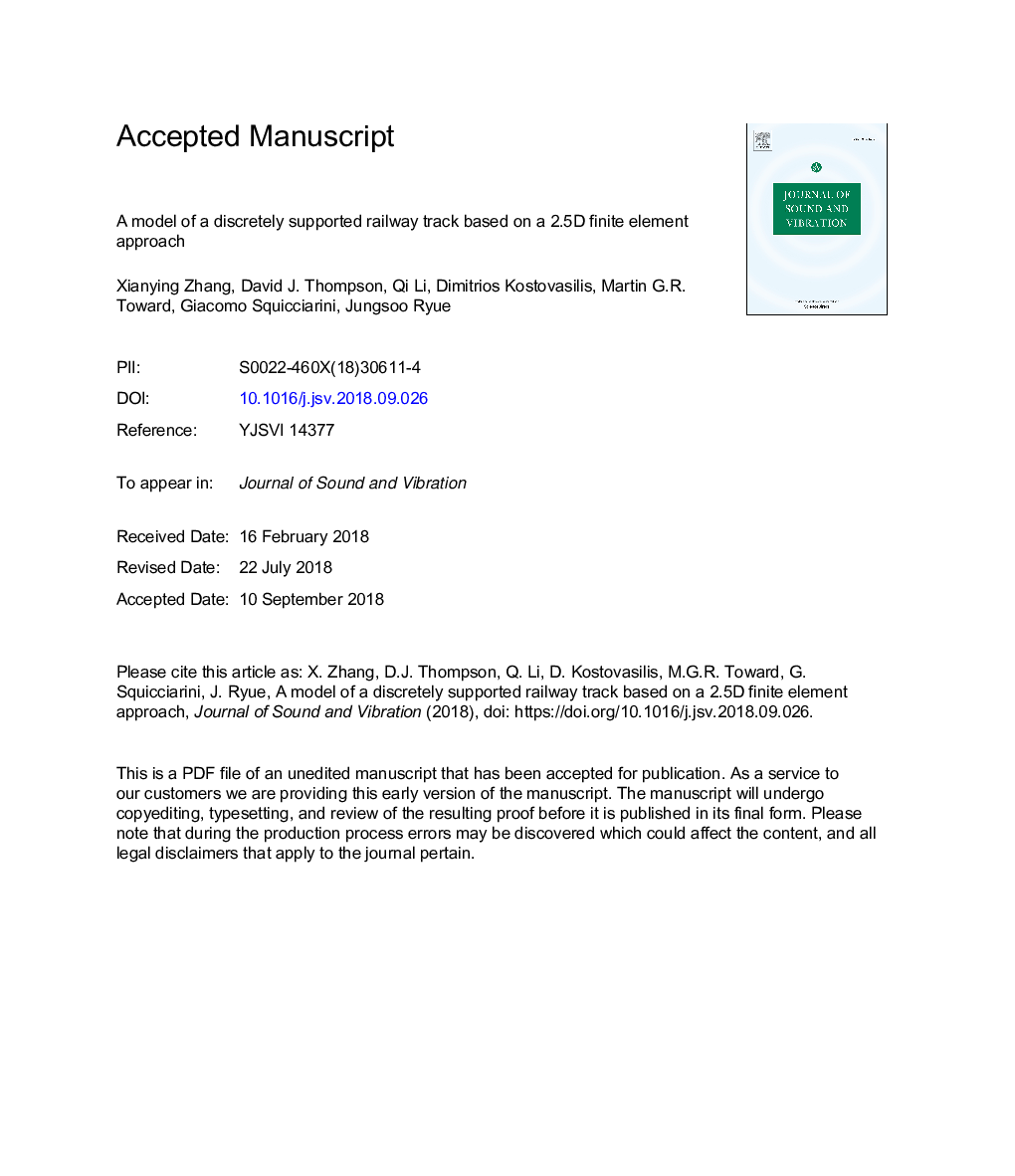| Article ID | Journal | Published Year | Pages | File Type |
|---|---|---|---|---|
| 10225412 | Journal of Sound and Vibration | 2019 | 37 Pages |
Abstract
The dynamic properties of a railway track are important for both the generation of rolling noise and the development of rail corrugation. A conventional track consists of long rails mounted periodically on transverse sleepers and supported in ballast. In order to improve the predictions of the noise and vibration of the track, a model of a discretely supported track is proposed based on the so-called 2.5 dimensional (2.5D) finite element approach, which is used to model an infinite free rail. This is coupled to a finite number of sleepers, by means of an array of springs representing each rail pad, using a receptance coupling method. The sleepers are represented by flexible beams, supported on an elastic foundation. Results are presented in terms of the point mobility and track decay rate and these are compared with the corresponding field measurements for two tracks, one with soft rail pads and one with stiff rail pads. Very good agreement is found between the predictions and the measurement results, especially for the track with soft rail pads. The flexible sleeper model is shown to give improved results compared with a rigid mass model, especially for the track with stiff rail pads.
Keywords
Related Topics
Physical Sciences and Engineering
Engineering
Civil and Structural Engineering
Authors
Xianying Zhang, David J. Thompson, Qi Li, Dimitrios Kostovasilis, Martin G.R. Toward, Giacomo Squicciarini, Jungsoo Ryue,
